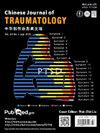Molecular mechanism underlying the protective effects of ischemic preconditioning in total knee arthroplasty
IF 1.9
4区 医学
Q2 ORTHOPEDICS
引用次数: 0
Abstract
Propose
To investigate the molecular mechanisms underlying the protective effects of ischemic preconditioning (IPC) in patients undergoing total knee arthroplasty.
Methods
GSE21164 was extracted from an online database, followed by an investigation of differentially expressed genes (DEGs) between IPC treatment samples at 2 time points (T0T and T1T). Function and pathway enrichment analyses were performed on the DEGs. A protein-protein interaction network was constructed to identify hub genes according to 5 different algorithms, followed by enrichment analysis. In addition, long noncoding RNAs (lncRNAs) were identified between the T0T and T1T samples. Furthermore, a competing endogenous RNA network was predicted based on the identified lncRNA-messenger RNA (mRNA), lncRNA-microRNA (miRNA), and mRNA-miRNA relationships revealed in this study. Finally, a drug-gene network was investigated. Statistical analyses were performed using GraphPad Prism 8.0. Differences between groups were determined using an unpaired t-test. p < 0.05 was considered significant.
Results
A total of 343 DEGs at T0 and 10 DEGs at T1 were identified and compared with their respective control groups, followed by 100 DEGs between T0T and T1T. Based on these 100 DEGs, protein-protein interaction network analysis revealed 9 hub genes, mainly with mitochondria-related functions and the carbon metabolism pathway. Six differentially expressed lncRNAs were investigated between T0T and T1T. A competing endogenous RNA network was constructed using 259 lncRNA–miRNA–mRNA interactions, including alpha-2-macroglobulin antisense RNA 1-miR-7161-5p-iron-sulfur cluster scaffold. Finally, 13 chemical drugs associated with the hub genes were explored.
Conclusion
Iron-sulfur cluster scaffold may promote IPC-induced ischemic tolerance mediated by alpha-2-macroglobulin antisense RNA 1-miR-7161-5p axis. Moreover, IPC may induce a protective response after total knee arthroplasty via mitochondria-related functions and the carbon metabolism pathway, which should be further validated in the near future.

全膝关节置换术中缺血预处理保护作用的分子机制。
目的:研究缺血预处理(IPC)对全膝关节置换术患者的保护作用的分子机制:从在线数据库中提取 GSE21164,然后调查两个时间点(T0T 和 T1T)IPC 治疗样本之间的差异表达基因(DEGs)。对 DEGs 进行了功能和通路富集分析。根据 5 种不同的算法构建了蛋白质-蛋白质相互作用网络,以确定枢纽基因,然后进行富集分析。此外,还鉴定了 T0T 和 T1T 样本之间的长非编码 RNA(lncRNA)。此外,根据本研究中发现的lncRNA-信使RNA(mRNA)、lncRNA-微RNA(miRNA)和mRNA-miRNA关系,预测了竞争性内源性RNA网络。最后,还研究了药物基因网络。统计分析使用 GraphPad Prism 8.0 进行。组间差异采用非配对 t 检验:在 T0 和 T1 分别发现了 343 个 DEGs 和 10 个 DEGs,并与各自的对照组进行了比较,随后在 T0T 和 T1T 之间发现了 100 个 DEGs。基于这 100 个 DEGs,蛋白质-蛋白质相互作用网络分析发现了 9 个枢纽基因,主要与线粒体相关功能和碳代谢途径有关。在T0T和T1T之间研究了6个差异表达的lncRNA。利用259个lncRNA-miRNA-mRNA相互作用构建了竞争性内源性RNA网络,包括α-2-巨球蛋白反义RNA 1-miR-7161-5p-铁硫簇支架。最后,探讨了与枢纽基因相关的 13 种化学药物:铁硫簇支架可促进α-2-巨球蛋白反义 RNA 1-miR-7161-5p 轴介导的 IPC 诱导的缺血耐受。此外,IPC可能通过线粒体相关功能和碳代谢途径诱导全膝关节置换术后的保护性反应,这一点应在不久的将来得到进一步验证。
本文章由计算机程序翻译,如有差异,请以英文原文为准。
求助全文
约1分钟内获得全文
求助全文
来源期刊

Chinese Journal of Traumatology
ORTHOPEDICS-
CiteScore
3.80
自引率
4.80%
发文量
1707
审稿时长
28 weeks
期刊介绍:
Chinese Journal of Traumatology (CJT, ISSN 1008-1275) was launched in 1998 and is a peer-reviewed English journal authorized by Chinese Association of Trauma, Chinese Medical Association. It is multidisciplinary and designed to provide the most current and relevant information for both the clinical and basic research in the field of traumatic medicine. CJT primarily publishes expert forums, original papers, case reports and so on. Topics cover trauma system and management, surgical procedures, acute care, rehabilitation, post-traumatic complications, translational medicine, traffic medicine and other related areas. The journal especially emphasizes clinical application, technique, surgical video, guideline, recommendations for more effective surgical approaches.
 求助内容:
求助内容: 应助结果提醒方式:
应助结果提醒方式:


